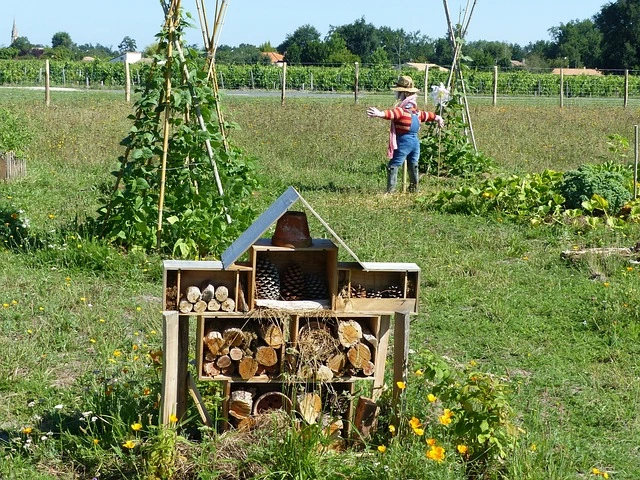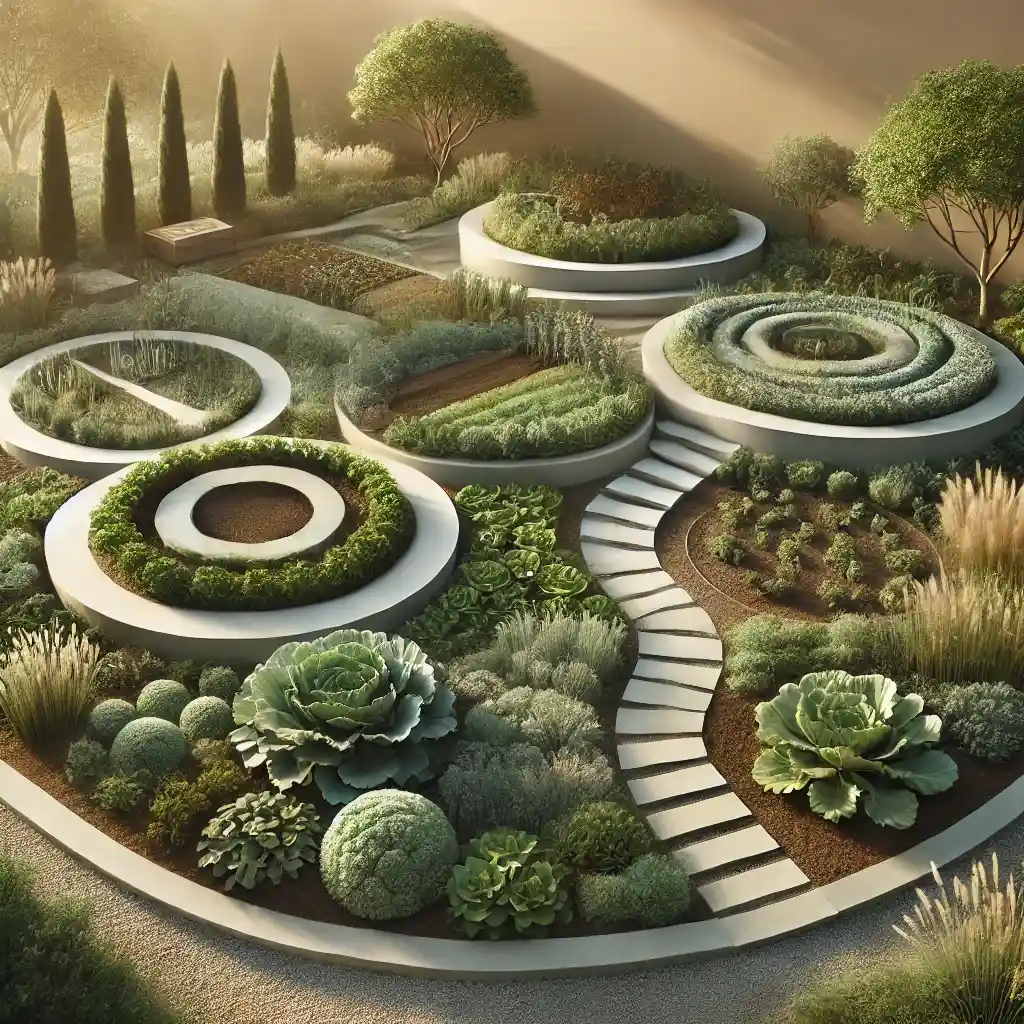Permaculture Gardening: Principles, Practices, and Designing an Ecosystem
Permaculture gardening is more than just a method of growing food—it’s a philosophy and design system rooted in sustainability, regeneration, and harmony with nature. By mimicking natural ecosystems, permaculture gardening enables gardeners to create self-sustaining landscapes that minimize waste, conserve resources, and produce abundant yields. This guide explores the core permaculture design principles, practical strategies for regenerative agriculture, and actionable tips for designing a thriving sustainable food production system.
What Is Permaculture Gardening?
Permaculture gardening is a holistic approach that integrates natural ecosystems into human-designed landscapes. The term “permaculture” combines “permanent” and “agriculture,” reflecting its focus on long-term sustainability. Unlike conventional gardening, which often relies on synthetic fertilizers and pesticides, permaculture emphasizes working with nature to create resilient, self-sustaining systems.
At its core, permaculture gardening is about designing gardens that:
- Mimic natural ecosystems.
- Require minimal external inputs.
- Create closed-loop cycles where waste becomes a resource.
- Prioritize biodiversity and ecological balance.
The Core Principles of Permaculture Gardening
The foundation of permaculture lies in its design principles, guiding gardeners to create sustainable systems. Key principles include:
1. Observe and Interact
- Spend time observing your garden’s natural patterns, such as sunlight, wind, and water flow.
- Interact with your environment to understand its unique characteristics and needs.
2. Catch and Store Energy
- Harness renewable resources like sunlight, rainwater, and organic matter.
- Use techniques like rainwater harvesting, composting, and solar energy to store and utilize energy efficiently.
3. Obtain a Yield
- Design your garden to produce food, medicine, or other resources while maintaining ecological balance.
- Focus on high-yield, low-maintenance plants like perennial vegetables and fruit trees.
4. Apply Self-Regulation and Feedback
- Monitor your garden’s performance and make adjustments as needed.
- Avoid practices that deplete resources or harm the environment.
5. Use and Value Renewable Resources
- Prioritize renewable resources like compost, mulch, and natural pest control methods.
- Reduce reliance on non-renewable inputs like synthetic fertilizers.
6. Produce No Waste
- Turn waste into resources by composting kitchen scraps, recycling materials, and reusing water.
- Create a closed-loop system where every output becomes an input.
7. Design from Patterns to Details
- Start with the big picture, such as the layout of your garden, and then refine the details.
- Use natural patterns, like spirals and layers, to guide your design.
8. Integrate Rather Than Segregate
- Combine plants, animals, and structures to create mutually beneficial relationships.
- For example, plant nitrogen-fixing legumes near vegetables to enrich the soil.
9. Use Small and Slow Solutions
- Focus on small, manageable projects that can grow over time.
- Avoid large-scale interventions that may disrupt natural systems.
10. Value Diversity
- Cultivate a wide variety of plants to increase resilience and reduce the risk of pests and diseases.
- Incorporate native species and companion plants for a balanced ecosystem.
11. Use Edges and Value the Marginal
- Maximize the use of edges, such as the borders between garden beds and pathways, where biodiversity thrives.
- Utilize every available space, including vertical gardening and container gardening.
12. Creatively Use and Respond to Change
- Adapt your garden design to changing conditions, such as climate, soil health, and plant growth.
- Embrace challenges as opportunities for innovation.
Practical Strategies for Permaculture Gardening
Implementing permaculture gardening requires thoughtful planning and practical techniques. Here are actionable strategies to get started:
1. Build Healthy Soil
- Use regenerative agriculture techniques like composting, mulching, and cover cropping to enrich the soil.
- Avoid tilling, which disrupts soil structure and microbial life.
- Incorporate organic matter to improve soil fertility and water retention.
2. Harvest and Conserve Water
- Install rain barrels or cisterns to collect rainwater for irrigation.
- Use swales (shallow ditches) to direct water flow and prevent erosion.
- Mulch around plants to retain soil moisture and reduce evaporation.
3. Plant Perennials
- Focus on perennial plants like fruit trees, berry bushes, and asparagus, which require less maintenance and provide long-term yields.
- Combine perennials with annual crops for a diverse and productive garden.
4. Create Polycultures
- Plant a mix of species that support each other, such as the “Three Sisters” (corn, beans, and squash).
- Avoid monocultures, which are more vulnerable to pests and diseases.
5. Encourage Biodiversity
- Attract pollinators and beneficial insects by planting flowers like marigolds, lavender, and sunflowers.
- Incorporate native plants to support local wildlife and maintain ecological balance.
6. Use Natural Pest Control
- Introduce predators like ladybugs and birds to manage pests.
- Use companion planting to deter pests (e.g., planting garlic near roses to repel aphids).
7. Design Zones for Efficiency
- Divide your garden into zones based on how often you use them:
- Zone 1: High-use areas like vegetable beds and herb gardens.
- Zone 2: Less frequently used areas like fruit trees and compost bins.
- Zone 3: Low-maintenance areas like woodlots or wildflower meadows.
Enhanced Features: Checklists and Tools
Permaculture Setup Checklist
- Observe and map your garden space.
- Identify water flow and microclimates.
- Select perennial and companion plants.
- Install rainwater harvesting systems (e.g., barrels or swales).
- Begin composting kitchen and garden waste.
- Design layers using the “forest garden” model.
- Regularly monitor and adapt the system.
Interactive Tools
- Garden Planner Tool: Plan your zones and select suitable plants for your climate.
- Seasonal Checklist: Track planting and maintenance tasks throughout the year.
Regional Adaptations and Success Stories
For Arid Regions
- Focus on xeriscaping and drought-resistant plants like aloe vera, rosemary, and native grasses.
- Use sunken beds and mulch to conserve water.
For Temperate Climates
- Incorporate cold frames or hoop tunnels to extend the growing season.
- Plant hardy perennials like rhubarb, currants, and gooseberries.
Success Story: Suburban Permaculture Garden
- A family in California transformed a suburban backyard into a thriving permaculture garden, producing vegetables year-round with minimal water use by implementing swales and drip irrigation.
Visual Guides
- Forest Garden Layers Diagram: Illustrate the canopy, understory, and ground layers for clarity.
- Companion Planting Chart: Display beneficial plant pairings.
- Water Flow Illustration: Show how to implement swales and water capture techniques.
FAQ: Permaculture Gardening
What is permaculture gardening?
Permaculture gardening is a sustainable approach to gardening that mimics natural ecosystems. It focuses on creating self-sustaining systems that minimize waste, conserve resources, and promote biodiversity.
What are the benefits of permaculture gardening?
Benefits include improved soil health, reduced water usage, increased biodiversity, and sustainable food production. It also minimizes reliance on synthetic inputs and creates a resilient ecosystem.
How do I start a permaculture garden?
Start by observing your environment, designing a layout based on permaculture design principles, and building healthy soil. Focus on planting perennials, conserving water, and creating closed-loop systems.
Permaculture gardening offers an inspiring way to work with nature while producing food, improving the environment, and creating a self-sustaining landscape. Start small, follow the principles outlined in this guide, and watch your garden flourish sustainably for years to come.










